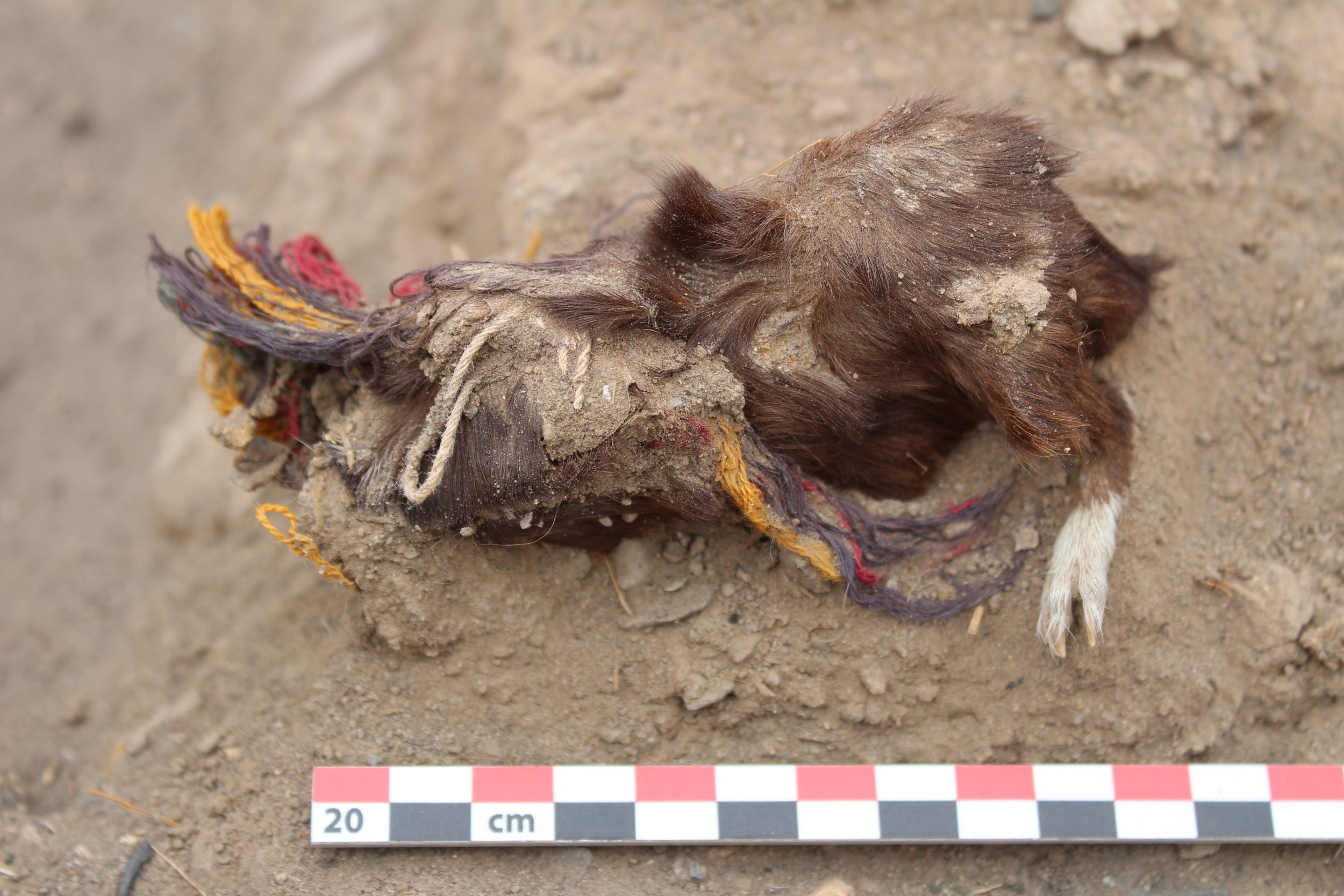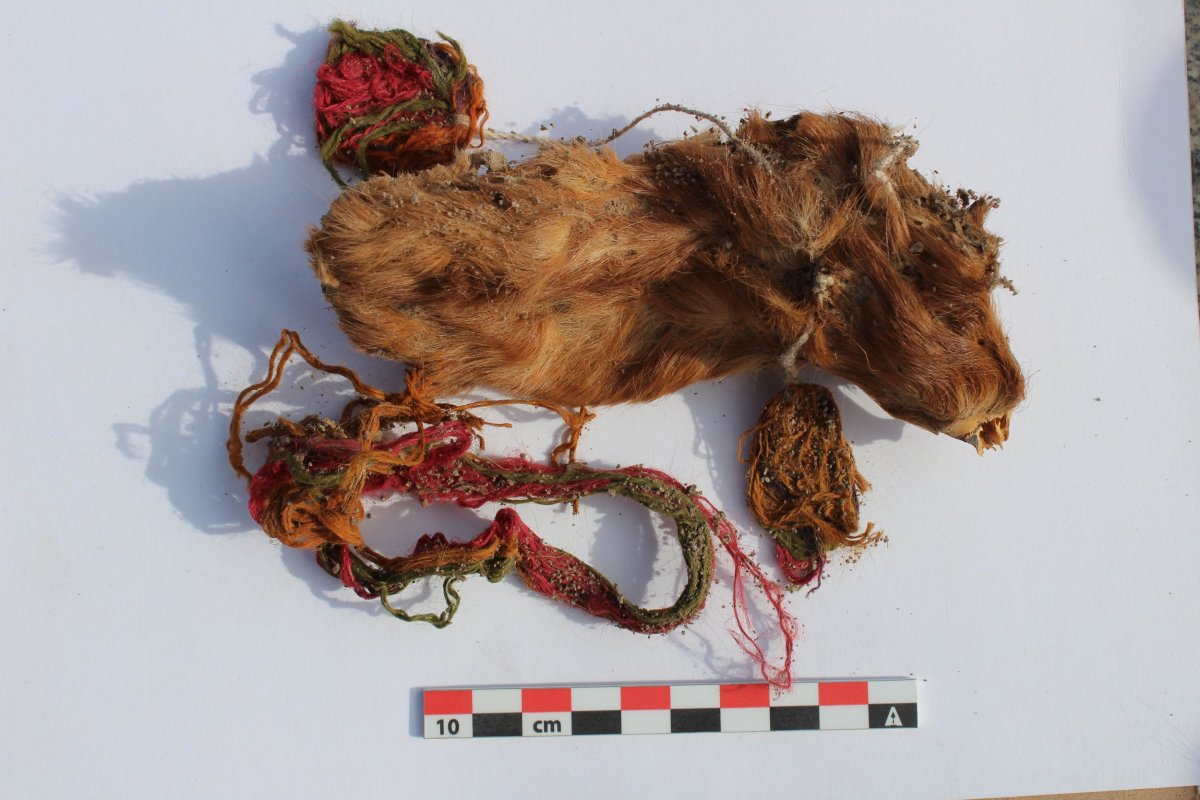
One hundred ritually sacrificed guinea pigs dressed up in jewelry have been discovered at an Inca archaeological site in Peru. The rodents were found to have been adorned with earrings and necklaces, and some of them wrapped up in tiny rugs—the first time such a find has been made.
The Inca civilization is known to have sacrificed animals, and Early Spaniards arriving in South America reported the mass killing of different species, including guinea pigs. Indeed, reports suggest hundreds of guinea pigs would be killed in a single ceremony. However, archaeological evidence of this specific practice has been lacking.
In a study accepted for publication in the International Journal of Osteoarchaeology, Lidio Valdez, from the Institute of Andean Studies and Acari Valley Archaeological Project, announced the discovery of two guinea pig burial sites at the Tambo Viejo site in southern Peru. Dating revealed they were killed about 400 years ago.
In total, Valdez found 72 guinea pig remains in one Inca structure and 28 in another. These buildings would have been located next to a plaza—an open space where public activities probably took place, he told Newsweek. After the arrival of the Spanish, these buildings were taken over. The guinea pigs, however, had been buried beneath the floors of the buildings and during excavations, they were uncovered.
The find itself, Valdez said, was not a huge surprise—after all, the early reports from the Spanish indicate it happened regularly. "However, I was surprised after seeing that a good number of the guinea pigs were adorned with colorful strings that were placed as earrings and necklaces," he said. "The Spanish never mentioned anything about that."
The guinea pigs were found to have been dressed up with colorful strings. The strings had been positioned to make them into earrings and necklaces. Others, he wrote, had been "carefully enveloped in a small piece of rug made of cotton fiber." Valdez said it is difficult to say why some were wrapped in rugs, but it "could be something to do with the desire of particular individuals who perhaps wanted to make the gifts extra special."
He added: "Adorned guinea pigs similar to the ones found at Tambo Viejo were never found anywhere, making the findings unprecedented."
Analysis revealed most of the guinea pigs were juvenile: "Humans prefer the meat of young animals because of its tenderness. Humans believed that deities also deserved tender meat," he said. "We must remember 'young' may also mean other things things, such as pure, uncontaminated and so on."
The guinea pigs showed no sign of external injury, suggested they were asphyxiated. This could have been from being buried alive—something Valdez says is probably the case, but that it is difficult to prove. "A good number of the guinea pigs were found in an excellent state of preservation—naturally mummified. These animals were also found with their heads up. The well preserved guinea pigs do not exhibit any sign of trauma or cuts, suggesting again that they may have been alive when buried."
Concluding, Valdez said more research will be needed to understand how the animals were killed and why they were adorned in colorful strings. But regardless, this discovery provides the first physical evidence of guinea pig sacrifice from this period. "Although the Spanish mentioned the sacrifice of guinea pigs, never before archaeological [has] research resulted in the finding of large number of sacrificed guinea pigs, thus making the findings from Tambo Viejo unparalleled," he said.

Uncommon Knowledge
Newsweek is committed to challenging conventional wisdom and finding connections in the search for common ground.
Newsweek is committed to challenging conventional wisdom and finding connections in the search for common ground.
About the writer
Hannah Osborne is Nesweek's Science Editor, based in London, UK. Hannah joined Newsweek in 2017 from IBTimes UK. She is ... Read more
To read how Newsweek uses AI as a newsroom tool, Click here.






